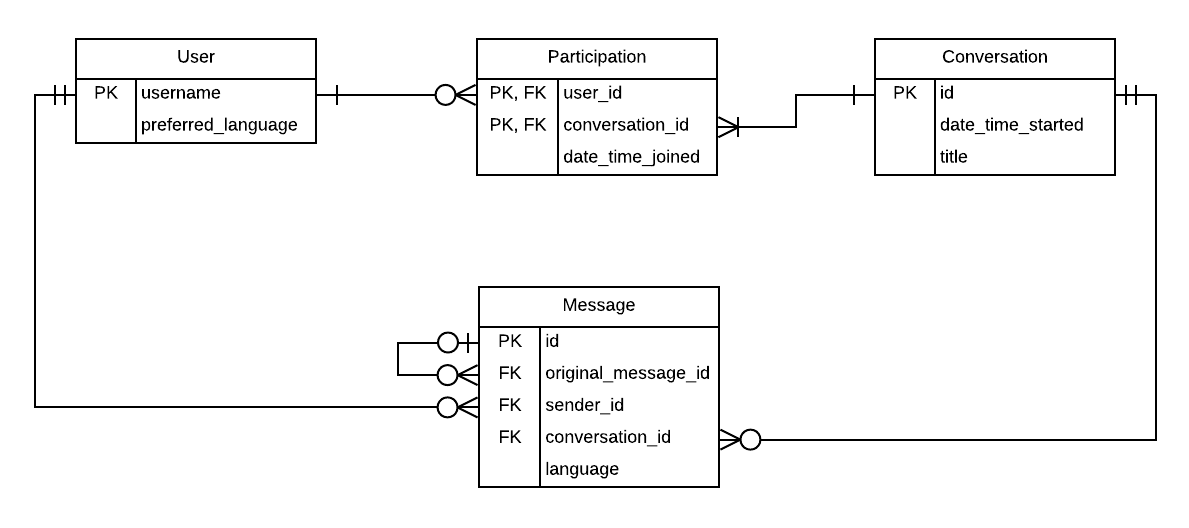You’ll recall from the last post that we’re working through Jeremy Daly’s 20 “easy” steps to switch from RDBMS to DynamoDB, using Babbl as our example application. In this post we’ll tackle steps one and two.
Step One
Accept the fact that Amazon.com can fit 90% of their retail site/system’s workloads into DynamoDB, so you probably can too. 🤔
Mind-blowing, but done. Fully mentally committed to this, otherwise why go through this exercise?
Step Two
Create an Entity-Relationship Model, just like you would if you were designing a traditional relational database. 👩💻
We’re going to make this a minimum viable product (MVP), so we can keep our entities as simple as possible while retaining the required functionality. We can get a functioning app with only four entities:
- User
- Conversation
- Participation
- Message
User
We’re going to hand off all the user authentication and storage tasks to Amazon Cognito. That way, all we have to worry about is:
username- (primary key) the username the user chooses at signup, to display in conversationspreferred_language- the user’s preferred language, for writing and reading messages. We will do this with a Cognito custom attribute, not the locale standard attribute
Conversation
A conversation consists of two or more users sending and receiving messages. A conversation has the following properties:
id- (primary key) an automatically generated guid/uuid for identifying a single conversationdate_time_started- when this conversation was initiatedtitle- a plain text title field for the conversation
Participation
Since a user can join multiple conversations and a conversation can have multiple users, we have a many-to-many relationship. We model this with the participation entity. A single participation entity represents a single user participating in a single conversation, and contains:
user_id- (composite primary key, foreign key) the user’susernameconversation_id- (composite primary key, foreign key) the conversation’siddate_time_joined- when this particular user joined this particular conversation
Message
Finally, we can get to the heart of the app - messages! Since the whole purpose of Babbl is to allow multi-lingual chat, we would expect at least two rows to be created for every message sent: one for the original message, and one for the translated message. Rather than modeling these as two separate entities, we’re going to model them as a single, self-referencing entity with the following attributes:
id- (primary key) a guid/uuid unique to this messageoriginal_message_id- (foreign key, nullable) theidof the original message from which this instance was translated, ornullif this is the original messagesender_id- (foreign key) theusernameof the user who sent this messageconversation_id- (foreign key) theidof the conversation where this message was sentlanguage- the Amazon Translate language code for this message instance
When we wire up these four entities and their relationships, they look like this:

This is simplified, of course, but it’s enough for our MVP. We’ll modify this as we go along if necessary.
Next up - data access patterns.



